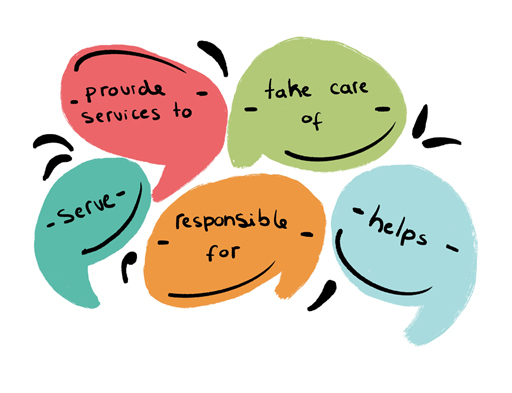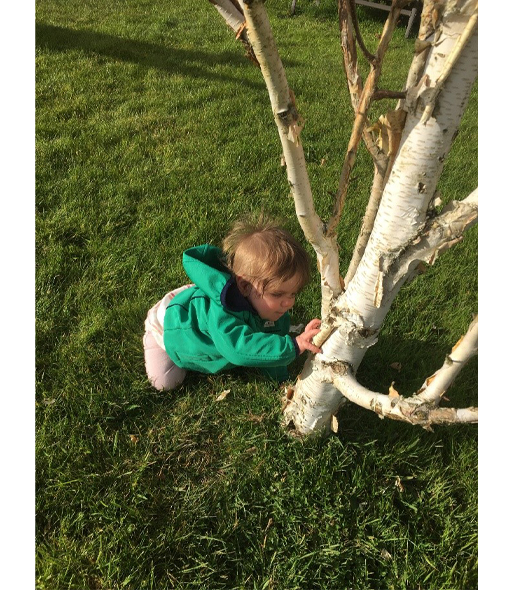Session 7: Growing Up Green
Introduction
‘Growing up Green’ is a term used with increasing frequency today in the midst of global anxiety about climate change and discussions about what is an appropriate response. The phrase, and therefore the inspiration for this session, was a quote by Louise Chawla, Professor Emerita at the University of Colorado, Boulder; she argues, ‘there is a need to raise questions about outdoor learning environments and the significance of building natural elements in so that young children are encouraged in ‘growing up green’ and to become ‘agents of care for the natural world’ (Chawla, 2009, p. 6). American writer Richard Louv raises similar concerns in his influential book Last Child in the Woods first published in 2005 in which he asks; ‘where will the future stewards of nature come from?’
If you look up the word ‘steward’ in various dictionaries then you find several different definitions depending on the context within which it is used. However several words occur again and again within these definitions such as: ‘provide services to’; ‘take care of’; ‘serve’; ‘responsible for’; ‘helps’.

Therefore ‘steward’ is a helpful term to use when thinking about the dispositions children need to develop if they are to ‘grow up green’.
Previous sessions have explored the benefits of taking young children outside to engage with nature. Session 6 stressed how it is not just being outside, but that the type of outdoor environment matters in terms of the benefits of young children’s nature contact from a human health and well-being perspective. But this session wants to develop thinking around this idea even further and encourage thinking about a reciprocal relationship between children and nature.
At the heart of the session is the argument that parents and carers, along with policy makers, need to consider, not just what young children can get from the natural world, but how they may learn to care for it. It extends the previous focus to think about how early experiences of nature can support the development of life-long pro-environmental attitudes and behaviours. This is important given the growing body of evidence documenting the extent of the global environmental crisis.
Reports from the Intergovernmental Panel on Climate Change (IPCC, 2021) and Intergovernmental Science-Policy Platform on Biodiversity and Ecosystem Services (IPBES, 2019) highlight the effects of human behaviour on the environment and the need for radical and urgent change. These global issues and concerns may feel far removed from the care of very young children, but research is starting to suggest otherwise:
… the indicative evidence is if children are able to have regular, positive experiences of different types of natural environment, both they, and the natural environment, can benefit.
At this point you may recall points from Session 3 and Froebel’s ideas about the importance of relationships, in particular relationships with the natural environment. This is not a one-sided relationship which might be encouraged through such expressions as ‘Let’s go and get some fresh air’ rather it is a relationship where the human (and here the child) should be looking also at what they can give; this ‘get and give’ approach is beginning to be conceptualised by Josephidou and Kemp (2022) as a ‘nature engaging and nature enhancing pedagogy’.
Therefore, the focus of this session is the intention to shift the discussion away from the ‘get’ and towards the ‘give’ as it explores some of the potential connections and relationships between young children and nature. Some of the questions you will consider include:
- What does it mean to be a steward if you are a baby or toddler?
- How does the often aggressive terminology around climate change activism align with the gentler approaches taken with young children?
By the end of this session, you should be able to:
- outline some key dimensions of the global environmental crisis
- recognise the interconnections between human and environmental health
- describe what ‘growing up green’ could look like in practice.
To begin with take a few minutes to listen to the following audio in which Nicola Kemp introduces this session.
Transcript
NICOLA KEMP: Welcome to Session 7, growing up green.
The inspiration for this session title was a quote by Louise Chawla, Professor Emerita at the University of Colorado, Boulder. In which she argues-- there is a need to raise questions about outdoor learning environments and the significance of building natural elements in so that young children are encouraged in growing up green and to become agents of care for the natural world. It is this idea that we need to think, not just about what young children can get from the natural world, but how they may learn to care for it, that it is at the heart of this session.
This has been a lifelong concern of Professor of practice in early childhood development and education Jan White. She introduces a concept she's been developing called nature friendly nurseries, and discusses the importance of children growing up from birth experiencing themselves as part of nature.
Given our focus on babies and toddlers, we will be thinking about how very early experiences of nature can help them become agents of care as they develop and grow. This is of particular importance in the current context of global environmental crisis.

